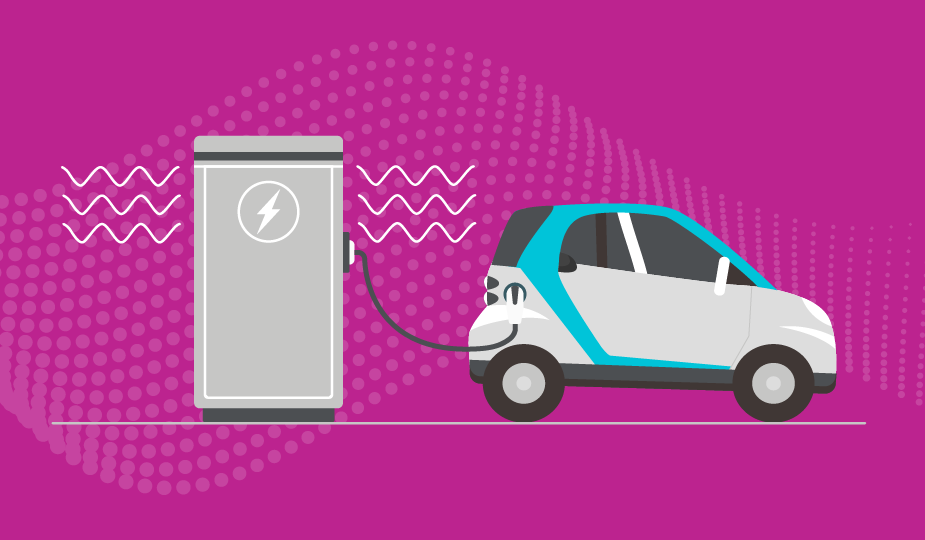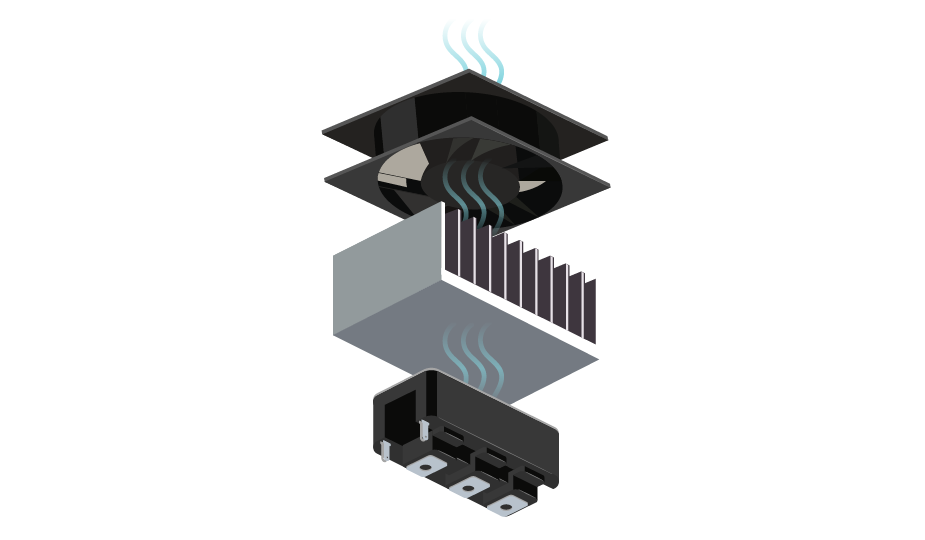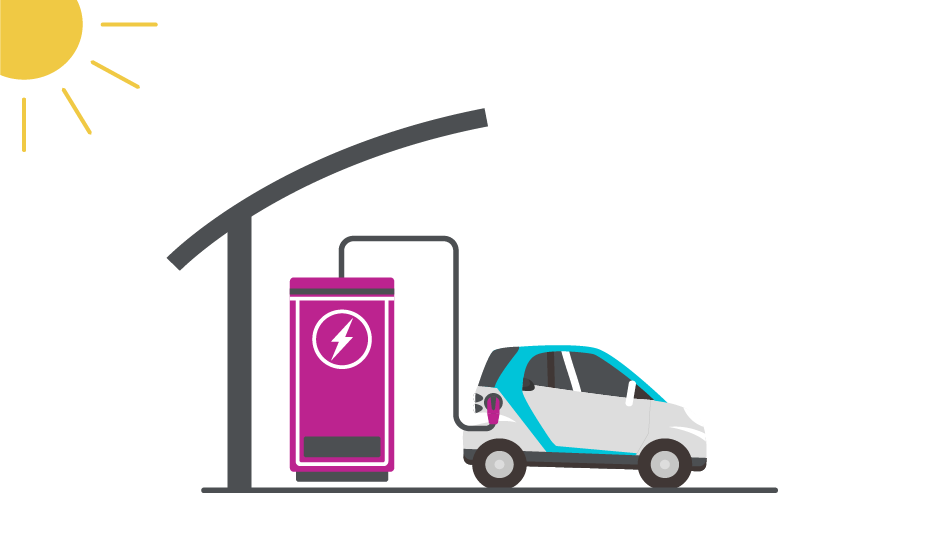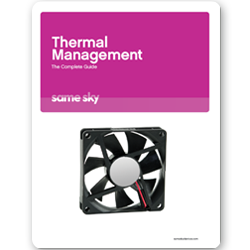Thermal Management for Next-Generation EV Charging

While electric vehicles have existed as long as gas vehicles, they have only become mainstream over the last few years. With significant improvements in electric vehicle technology and large amounts of government support, the demand growth of electric vehicles has been on a stratospheric trajectory. The EU’s 2035 ban of internal combustion vehicles and 2025 requirement for fast EV charging stations every 60 kilometers is simply one indicator of this expected demand increase. As EV’s become the predominant form of transportation, battery range and even faster charging will become a crucial part of the ability for the world economy to function. The improvements of these EV charging systems will require technological evolution in multiple areas, including thermal management.
Difference Between AC and DC Electric Vehicle Chargers
As the desire for faster chargers grows, there have been small changes and large changes in approach. One change has been a shift toward DC chargers, which can be a confusing term as all battery systems operate with DC electricity. However, the important distinction for these systems is that the rectification of power from AC to DC occurs in different places. The stereotypical AC charger, as seen most often in residential applications, is a glorified connector that communicates, filters, and controls the flow of AC power to the vehicle, where an onboard DC charger then rectifies the power and charges the batteries. In contrast, a DC charger performs the rectification before passing the power to the vehicle as a high voltage DC source. The largest benefit of DC chargers is that many weight and size restrictions are removed by moving the power conditioning hardware out of the EV and into an external structure.

With the removal of weight and size restrictions, DC chargers can easily integrate more components that can increase both their current throughput and the operating voltage. These chargers utilize cutting edge semiconductor devices to rectify the power, as well as filters and power resistors, all of which produce significant amounts of heat. While the filters and resistors are non-negligible sources, the greatest heat dissipator in an EV charging system is the IGBT, a semiconductor device that has seen greater usage in the last few decades. This powerful device has opened many opportunities in the charging landscape but adequately cooling it is a non-negligible concern.
Heat Generators and Dissipation Systems
An Insulated-Gate Bipolar Transistor, or IGBT, is essentially a cross between a FET and a BJT. Due to their ability to withstand large voltages, low on-resistance, fast switching speeds, and surprisingly high thermal robustness, IGBTs are ideal in high-power applications such as EV chargers. As IGBTs are being used as either rectifiers or inverters in these EV charging circuits, they switch on and off frequently, generating copious amounts of heat.
The thermal challenge being faced today is that IGBTs have increased in heat dissipation more than tenfold from 1.2 kW thirty years ago to 12.5 kW today, and this is expected to increase. The graphic below shows this in terms of power per surface area. By comparison, the highest power CPUs today are on the order of 0.18 kW, or only 7 kW/cm2. An enormous difference!

Two factors help in IGBT cooling. One is that the surface area is about twice that of a CPU. The other is that they can operate at higher temperatures, 170°C for IGBTs versus only 105°C for modern CPUs.
The most straightforward and reliable solution for thermal management is a combination of heat sinks and forced air. The thermal resistances found within a semiconductor device such as an IGBT are normally extremely low, while the thermal resistance between the device and the surrounding air is comparatively extremely high. Adding a heat sink vastly expands the surface area that can dissipate heat into the ambient air, lowering the thermal resistance, and moving air over a heat sink even further increases the effectiveness of the heat sink. As this device-air interface is the largest thermal resistance in the system, decreasing it as much as possible is of paramount importance. The benefit of this simple system is that a passive heat sink, if properly installed, will never fail, and a fan, which is an established, highly refined technology, is quite reliable. At Same Sky, we have designed heat sinks measuring up to 950x350x75 mm in EV charging applications that are large enough to passively handle less-demanding requirements or to actively handle more-demanding requirements with forced air. Shop Same Sky's full range of ac fans and dc fans.

There are also liquid cooling options for cooling dense heat sources such as IGBTs. A water-cooling system may be appealing as they achieve the lowest thermal resistances. However, there is the greater cost, complexity, and despite everything, it still uses heat sinks and fans as the main way to remove heat from the overall system. Due to this, direct cooling of the IGBTs, with heat sinks and fans, is the more desirable approach and active research is being performed to find improvements in air cooling technologies for IGBTs.
Component and Thermal Monitoring Placement
An integral part of the effectiveness of any cooling system is how components can be placed to optimize airflow and maximize heat distribution. Components placed without adequate space between them limits both the airflow and the size of heat sinks that can be used. Thus, any critical heat-generating components should be positioned strategically within the entire system to facilitate efficient overall cooling.
While care must be taken in placement of the individual heat-generating components, the placement of thermal sensors is equally paramount. In systems as large as DC EV chargers, control systems for real-time monitoring of temperature levels can enable active thermal management. Automatic adjustments in cooling mechanisms based on temperature readings can optimize performance and prevent overheating by either limiting current output or modifying the fan speeds. However, these automatic adjustments are dependent on the quality of their input data. If the temperature sensors are not accurate due to poor placement, then the system’s response will be correspondingly inaccurate.
External Factors and Environmental Considerations
EV charging stations are often installed outdoors, exposed to varying environmental conditions. Designing weatherproof enclosures with adequate ventilation and protection against elements like rain and extreme temperatures is crucial for maintaining optimal thermal conditions. Airflow paths and venting must be designed to prevent water ingress while not restricting airflow.
The most concerning external factor is solar heating from the sun beating down on the charger enclosure which significantly increases the internal ambient temperature. While this is a legitimate concern, the most effective solution is a straightforward one. Well-designed shading with adequate airflow between the shading and the charging unit will keep the ambient temperature of the charger substantially lower.

Looking to the Future
Around the world, the last few years have seen incredible adoption of electric vehicles as demand only continues to increase in leaps and bounds with technologies on every front. As more EVs are found on roadways, the implementation of these chargers will proliferate in equal measure. Well-functioning and efficient chargers will be crucial to this actively forming charging infrastructure. They will need to be cost-efficient as well, as cost is a non-negligible aspect of the speed at which individuals and corporations will integrate these chargers into their homes and businesses.
The expectation is not only that the number of EV’s and chargers will continue to grow but that the technologies that they’re based on will evolve and improve as well. Taking into consideration potential increases in charging power and capacity, changing software and hardware standards, as well as leaving intellectual space for completely new, unexpected changes, ensures that thermal management systems can adapt to evolving demands over time.
Electric vehicle chargers, at the most fundamental level, have the same thermal management concerns as any other dense, high-power electronic device. However, the power density of the IGBTs used within them and the quickly increasing demands that are placed on them gives this challenge a unique twist. As we move forward with charging speeds and battery capacities skyrocketing, the requirement to create these chargers effectively and safely will become ever more stringent, requiring more than ever from thermal management designers and engineers. At Same Sky, our range of thermal management components as well as our industry-leading thermal design services are here to help!



